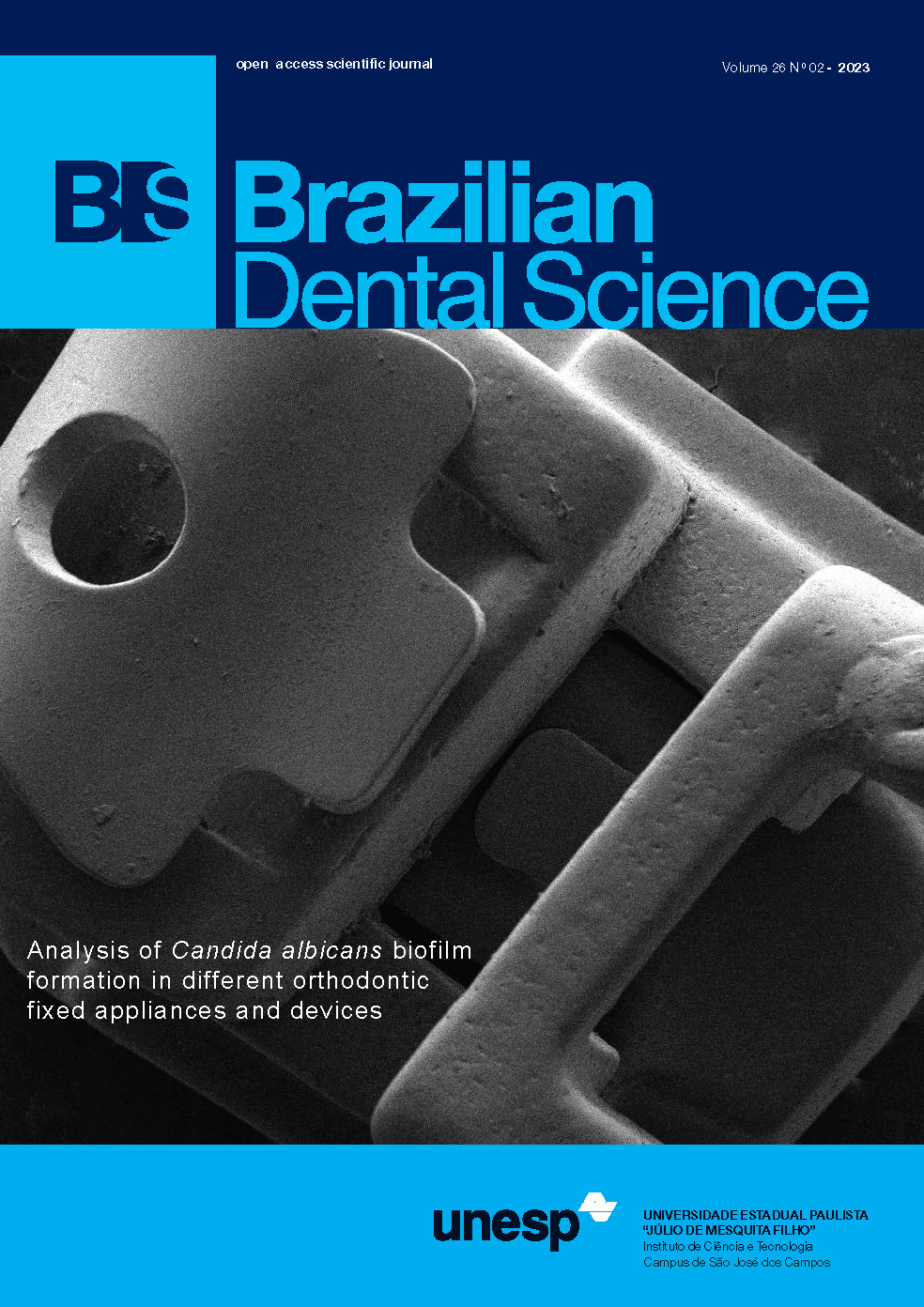Accuracy of selective laser sintered computer guided stents versus digital light processing stents in immediate implant placement in esthetic zone: a randomized controlled trial
DOI:
https://doi.org/10.4322/bds.2023.e3472Resumo
ABSTRACT
Objective: To compare accuracy of selective laser sintered computer guided stents versus digital light processing stents in immediate implant placement in esthetic zone. Material and Methods: The patients were selected according to the eligibility criterias. The selected patients were randomly allocated to either digital light processing stents (test group) or selective laser sintered computer guided stents (control group). Proper examination and diagnostic records were done for each patient followed by triple scan protocol with cone beam computer tomography (CBCT). Planning and construction of tooth supported computer guided surgical stent was done by either digital light processing technique for test group or selective laser sintering for control group. Twenty implants were inserted following computer guided implant placement protocol. After post-operative CBCT pre and post images were merged using blue sky bio software. Linear and angular deviations between planned implant and actual implant positions were measured. Results: Tests were considered statistically significant if the p- value was less than 0.05. Difference in means were calculated for the analysis of continuous variables with corresponding 95% confidence intervals. There was no statistical difference between selective laser sintering and digital light processing groups in all measured terms. Conclusion: Within the limitations of this study, both techniques can be used for immediate implant placement with clinically satisfactory results decreasing the positional errors associated with immediate implant placement.
KEYWORDS
Computer aided; Immediate dental implant; Stents; Surgery; Guided surgery.
Downloads
Downloads
Publicado
Como Citar
Edição
Seção
Licença
TRANSFERÊNCIA DE DIREITOS AUTORAIS E DECLARAÇÃO DE RESPONSABILIDADE
Toda a propriedade de direitos autorais do artigo "____________________________________________________________________" é transferido do autor(es) para a CIÊNCIA ODONTOLÓGICA BRASILEIRA, no caso do trabalho ser publicado. O artigo não foi publicado em outro lugar e não foi submetido simultaneamente para publicação em outra revista.
Vimos por meio deste, atestar que trabalho é original e não apresenta dados manipulados, fraude ou plágio. Fizemos contribuição científica significativa para o estudo e estamos cientes dos dados apresentados e de acordo com a versão final do artigo. Assumimos total responsabilidade pelos aspectos éticos do estudo.
Este texto deve ser impresso e assinado por todos os autores. A versão digitalizada deverá ser apresentada como arquivo suplementar durante o processo de submissão.




























